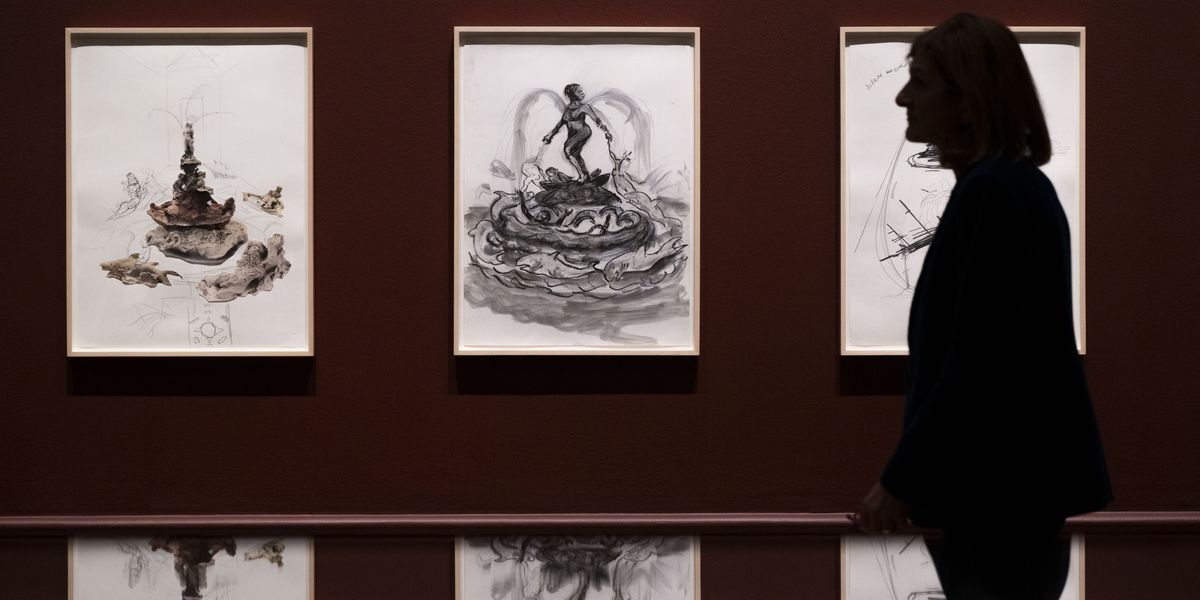The Royal Academy (RA) has outed one of its former academics for being a slaveowner as part of a new exhibition which explores the institute’s connections with colonialism.
John Singleton Copley, who joined the academy a decade after it was founded in the 18th century, will be exposed in a new exhibition entitled Entangled Pasts, which is due to open next month.
Copley, an American artist who later moved to England, enslaved three slaves at his family farm in Beacon Hill, Boston – Lucy, Cato, and Snap.
The artist – whose 1778 oil painting Watson and the Shark is to be a centrepiece of the exhibition – owned the slaves with his wife Susannah Clarke, whose father was a senior East India Company official in Boston.
The RA has slapped a trigger warning on the exhibition, warning visitors that it will ‘contain themes of slavery and racism, and historical racial language and imagery’
Royal Academy of Arts
One information board within the exhibition reads: “Copley is the only Academician known to have owned enslaved people, although many others, including those who supported abolition, worked for patrons whose fortunes were derived from enslavement and plantation ownership.”
His Watson and the Shark painting features a black sailor attempting to rescue a cabin boy from a shark attack. Analysis from the RA has revealed that Copley originally intended to have the central figure be white, but later changed his mind.
The first president of the RA, Joshua Reynolds, is also outed by the institution as having “benefited from the labour of a servant of African heritage …. [and] profited from the patronage of enslavers, plantation owners and those involved in the West India trade”.
The exhibition has been criticised after the RA slapped a trigger warning on it, notifying visitors that the Entangled Pasts, 1768-now: Art, Colonialism and Change “will contain themes of slavery and racism, and historical racial language and imagery”.
LATEST DEVELOPMENTS:
It also features works by JMW Turner, Ellen Gallagher, Yinka Shonibare, and Hew Locke, other artists and academics they have identified as having benefited from slavery.
One featured painting is Reynolds’ portrait of the future King George IV, who is being attended to by a “Black” figure who fixes his uniform.
The Royal Academy’s current president, Rebecca Salter, described the exhibition as a “historically and structurally white, Eurocentric institution, where much-needed change towards decolonial praxis has only recently begun.”
Its curator, Sarah Lea, explained in a catalogue essay that the institution was founded and thrived in a world tied to colonialism. She said: “We are all living in the long shadows of colonialism, ones that demand a new address to racial justice.”
The first president of the RA, Joshua Reynolds, is also outed by the institution as having benefited from slavery
PA
The new show aims to address the institution’s colonial history by assessing its previous members’ ties to slavery.
In describing the exhibition, the RA said: “This spring, we bring together over 100 major contemporary and historic works as part of a conversation about art and its role in shaping narratives of empire, enslavement, resistance, abolition and colonialism – and how it may help set a course for the future.
“Informed by our ongoing research of the RA and its colonial past, this exhibition engages around 50 artists connected to the RA to explore themes of migration, exchange, artistic traditions, identity and belonging.”
It runs from February 3 to April 28 and tickets cost £22.

